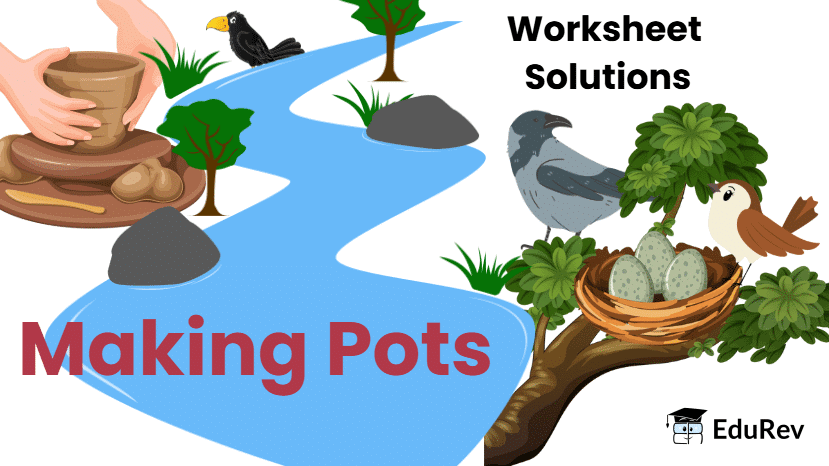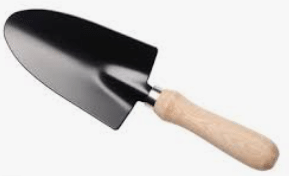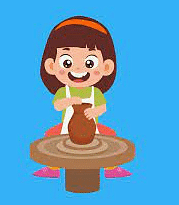Worksheet Solutions: Making Pots - 1 | EVS for Class 3 PDF Download

Q1: Fill in the blanks.
(i) Bhanate is a _______ in the story.
Ans: crow
(ii) Phudgudi laid _______ egg.
Ans: One
(iii) The potter makes pots using _______.
Ans: Clay
(iv) The kiln is like a big _______ used for baking pots.
Ans: Oven
(v) A _______ is used to dig soil to collect clay.
Ans: Trowel
Q2: True or False.
(i) Phudgudi is a crow.
Ans: False
Phudgudi is a sparrow.
(ii) The river gave Bhanate some water.
Ans: False
The river asked Bhanate to bring a pot for the water.
(iii) Pots and utensils are made from wood.
Ans: False
Pots and utensils are made from clay, not wood.
(iv) Bhanate, the crow, and Phudgudi, the sparrow, were best friends in the story.
Ans: True
(v) Phudgudi laid an egg in the story.
Ans: True
Q3: Fun Riddles!
1. I am made of clay and used to store water. Who am I?
Ans: A pot
2. I help the potter shape the pots. Who am I?
Ans: A potter’s wheel
3. I am a tool used to dig clay from the ground. Who am I?
Ans: A trowel
4. I make the pots strong by baking them. Who am I?
Ans: A kiln
Q4: Answer the following Questions.
(i) What is the use of trowel?
Ans: A trowel is used to dig and collect soil from the ground.
(ii) What does a potter do?
Ans: A potter makes pot and other objects using clay.
(iii) What has happened to the egg when the Bhanate reached to eat it?
Ans: When Bhanate finally reached back to eat the egg. The egg was hatched and a little bird came out of it and flew away.
(iv) Does the Bhanate got the egg to eat?
Ans: No, Bhanate did not get the egg to eat because it had already hatched.
(v) What did the river said to Bhanate?
Ans: The river said to Bhanate to bring the pot for filling the water.
(vi) What is the name of the sparrow in the story?
Ans: The name of the sparrow in the story is Phudgudi.
(vii) What is the name of the crow in the story?
Ans: The name of the crow in the story is Bhanate.
(viii) What things can be made using the clay?
Ans: Clay can be used in making pots, toys, decorative items etc.
(ix) What was the deal between Bhanate and Phudgudi?
Ans: Bhanate said that if Phudgudi laid the egg first, then he will eat them and if he laid the egg first then Phudgudi can eat them.
(x) On what condition the blacksmith gave the trowel to Bhanate?
Ans: The blacksmith gave the trowel on condition of returning it back.
(xi) How many eggs did Phudgudi laid?
Ans: Phudgudi laid only one egg.
(xii) What did the clay pit said to Bhanate?
Ans: The clay pit asked Bhanate to bring the trowel from blacksmith.
(xiii) Who all people did Bhanate went for the help?
Ans: Bhanate went to the river, then to the potter, then to the clay pit, then to the blacksmith.
(xiv) What did Phudgudi said to Bhanate when he asked for the egg?
Ans: Phudgudi asked him to go and wash his beak in river first.
(xv) What did the potter said to Bhanate?
Ans: The potter said to bring some clay from the clay - pit.

|
45 videos|182 docs|48 tests
|
FAQs on Worksheet Solutions: Making Pots - 1 - EVS for Class 3
| 1. How do I make pots by hand? |  |
| 2. What types of clay are suitable for making pots? |  |
| 3. How long does it take to make a pot by hand? |  |
| 4. Can I make pots without a potter's wheel? |  |
| 5. How do I decorate and glaze my handmade pots? |  |
















